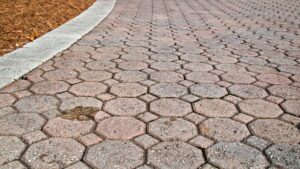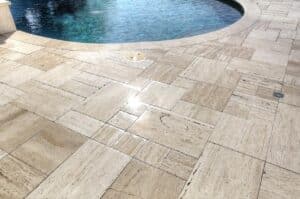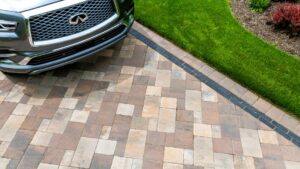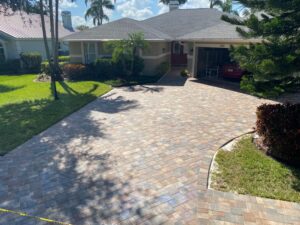Anyone who has ever worked with landscape knows that it goes beyond mere gardening and maintenance. It encompasses creating a harmonious blend of nature and design. An essential element to elevate the aesthetics of your outdoor space is a brick paver walkway.
Brick pavers have been used by many cultures for centuries, and there’s a reason for it. Bricks can be extremely resistant, cheap, and practical. Nowadays, a brick paver walkway can add a touch of timeless elegance to your property.
Our goal with this article is to explore the various facets of brick paver walkways, from their history and benefits to installation and maintenance. So let’s get right to it, shall we?
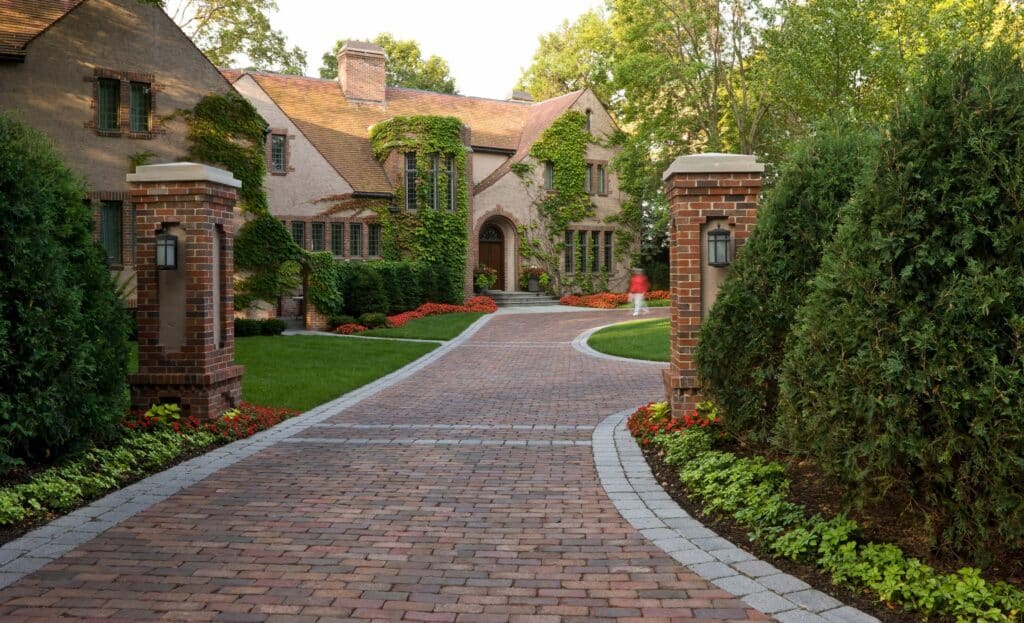
Brick paver walkway: a brief history
Brick pavers have a long history that spans back to our most ancient civilizations.
The origins of brick usage can be traced back to the cradle of civilization itself, with the emergence of the Indus Valley Civilization around 7,000 BC. At that time, early artisans began to cook blocks of clay to harden them, thus creating the first bricks known to man.
However, it wasn’t until the Roman Empire that brick pavers truly found their place in the architectural spotlight. The Romans, renowned for their engineering prowess, recognized the immense potential of brick pavers to transform urban landscapes.
The streets of Rome and the bustling lanes of Pompeii became showcases of innovation, as these brick pavers adorned the surfaces, creating pathways that not only facilitated movement but also elevated the aesthetics of the cities.
The inherent qualities of brick made it the ideal choice for these early pavers. The durability of fired clay allowed these pathways to withstand the rigors of foot traffic and the unpredictable forces of nature, proving that even in ancient times, the concept of durability was well understood and valued.
These brick pavers stood as a testament to the resilience of design, a quality that endures through the ages and is still cherished today. From European medieval towns to Asian cityscapes, the concept of utilizing brick as a material for outdoor pathways transcended geographical boundaries and cultural differences.
Fast-forward to the present day – and the appeal of brick pavers remains undiminished. The classic elegance they exude continues to grace modern landscapes, seamlessly blending tradition with contemporary aesthetics.
As we step into outdoor spaces adorned with brick pavers, we’re not only walking upon a physical pathway but also traversing through time, connecting with the craftsmanship of ancient artisans who laid the foundations for our present-day architectural preferences.
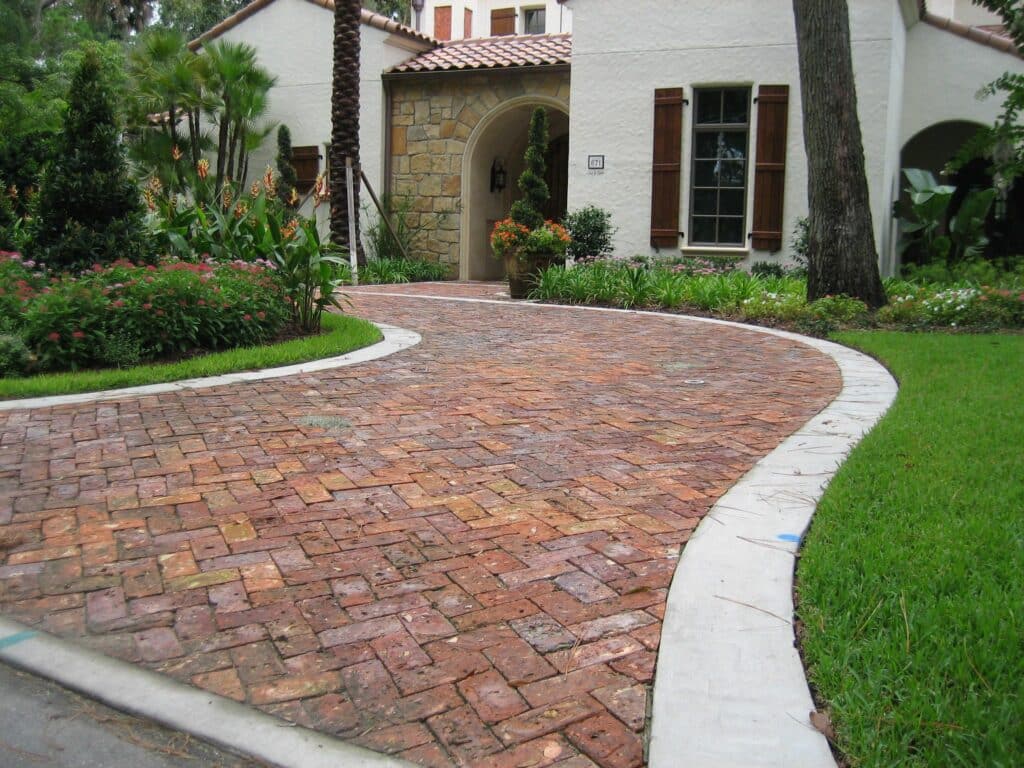
Benefits of brick paver walkways
The obvious first big benefit of brick paver walkways is their aesthetic value. They exude a classic and timeless charm that enhances the visual appeal of any property. They offer a warm and inviting atmosphere, creating a sense of nostalgia and elegance.
Bricks are also very well known for their remarkable durability. They can withstand heavy foot traffic, vehicular loads, and the challenges posed by weather elements. This longevity ensures that your investment in a brick paver walkway will stand the test of time.
Versatility is another big advantage, as brick pavers are available in a wide range of colors, sizes, and patterns. This versatility allows you to create intricate designs, and geometric patterns, or even replicate the vintage look of old cobblestone streets.
Unlike some other materials, brick pavers require minimal maintenance, which is another big advantage. Occasional sweeping and rinsing to remove debris and dirt are usually sufficient to keep them looking their best.
And still in the maintenance department, if the worst happens and a section of your brick paver walkway becomes damaged or stained, it’s relatively easy to replace individual bricks without disturbing the rest of the path.
Lastly, Bricks are a sustainable choice as they are made from natural materials and are fully recyclable. Additionally, their permeable nature allows water to seep into the ground, aiding in water conservation.
Installation of a brick paver walkway
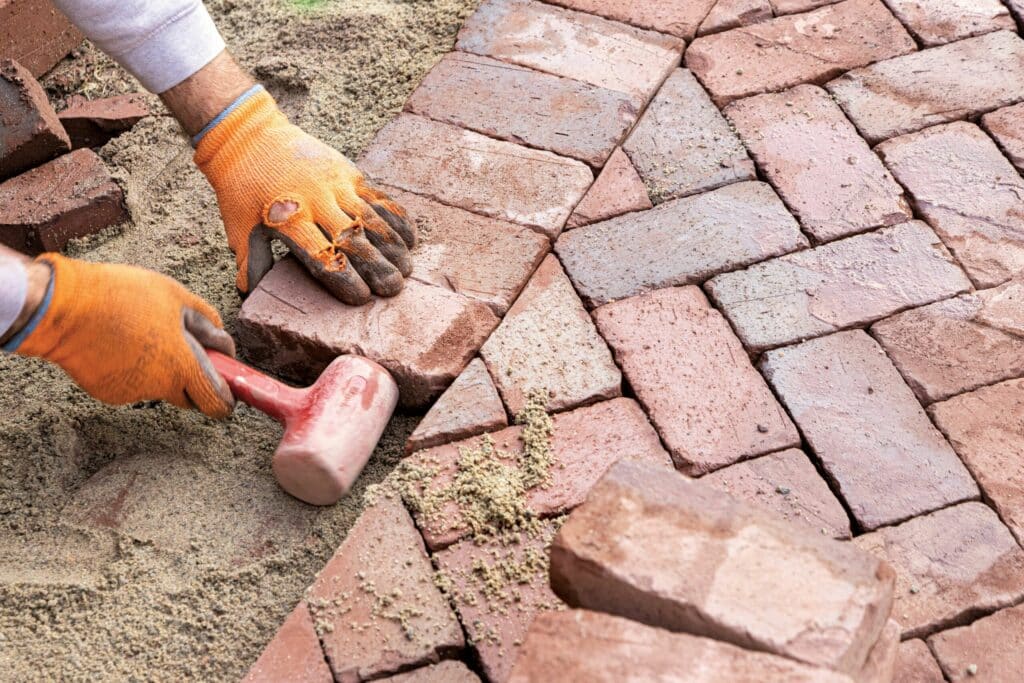
Brick pavers are very good, but they are only as good as a well-done installation allows them to be.
In fact, that goes for all pavers. A bad installation can ruin even the best pavers in the world. That’s why we always recommend having your installation done by professionals, especially if it’s a big project and if you don’t have any experience working with pavers.
Still, the process is relatively simple enough to tackle from a DIY perspective. So if you’re feeling daring, or have experience, you can safely follow the following instructions.
- Step 01: planning
Before starting, a comprehensive evaluation of the site is essential. Factors such as the intended purpose of the walkway, existing landscaping elements, and potential obstacles must be considered. This planning phase ensures that the walkway’s design harmonizes with the overall aesthetic of the landscape. - Step 02: excavation
A critical initial step involves the excavation of the designated area for the walkway. This excavation not only determines the walkway’s dimensions but is also crucial for establishing proper drainage.
The first thing to watch out for is the walkway – which must be slightly sloped (1 inch every 4 feet) away from buildings and towards suitable drainage points. As for the depth of the excavation, 6 inches is the recommended amount. - Step 03: base
Establishing a sturdy and stable foundation is fundamental to the durability of the walkway.
After excavation, a layer of compacted aggregate material, typically composed of crushed stone or gravel, is laid down. To know precisely how much, you must subtract from 6 inches the height of your pavers plus 1 inch.
Fill the hole with the aggregate, 1-inch layers at a time, and compact as you go. Then add a 1-inch layer of coarse sand and level it with the help of a 2×4. - Step 04: paver placement
The process of placing the brick pavers involves meticulous attention to detail. The selected pavers are arranged in the desired pattern, with a consistent gap ensured by the use of spacer tools.
This uniform gap between pavers allows for adequate water runoff, minimizing the risk of water accumulation and freezing-related damage during colder months. - Step 05: edging
Edging materials, which can range from plastic or metal to natural stone, are positioned along the sides of the walkway.
These edging elements serve a dual purpose: they maintain the structural integrity of the walkway by preventing lateral movement of the pavers, and they enhance the walkway’s visual appeal by defining its borders. - Step 06: sanding the installation
After the pavers are in place, you must now spread polymeric sand on their surface.
This specialized sand contains binding agents that, when activated by moisture, solidify and effectively fill the gaps between the pavers. This process creates a cohesive, interlocking surface that resists weed growth, minimizes erosion, and stabilizes the pavers.
Spread the sand and sweep it carefully, aiming to fill the gaps between the pavers.
With that last step, you’re finished with the installation of your brick paver walkway. An extra step would be to compact the installation once more after spreading the polymeric sand.
It is recommended that you seal your installation afterward. You can refer to this article about sealing for more information.
Start planning your brick paver walkway today
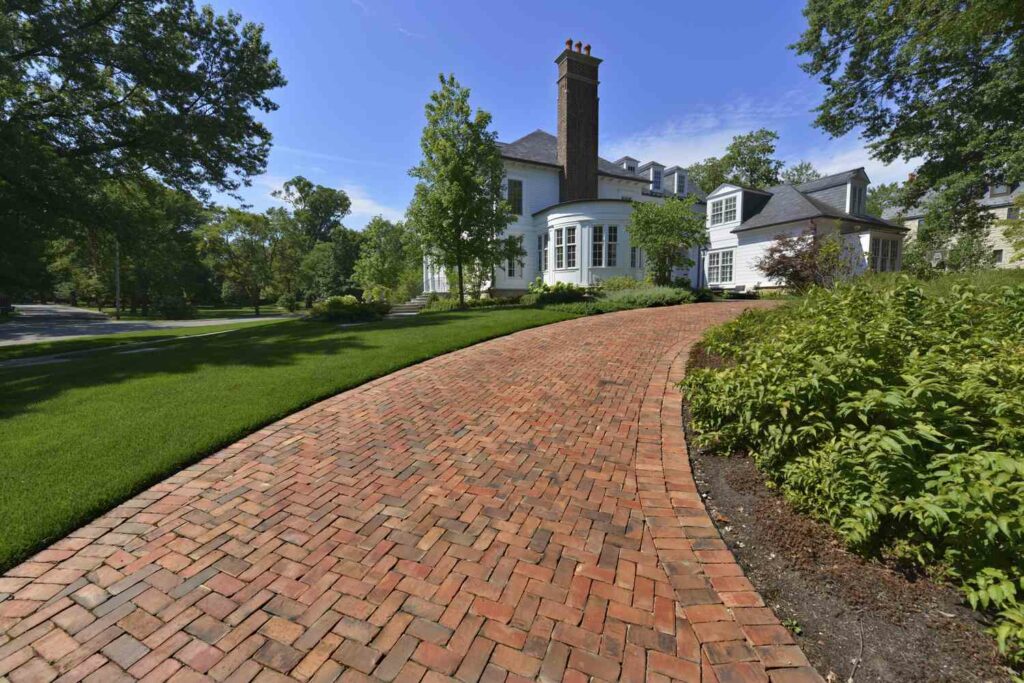
As you can see, brick pavers are one of the best hardscape materials out there, and have been that way ever since their invention way back in 7,000 BC. They have numerous benefits for a very good cost and can last for decades with proper installation and maintenance.
However, the installation process of a paver brick walkway can be hard if you don’t have experience. It is not recommended that you try to install it by yourself in that case. You might end up losing money by ending up with a less-than-optimal installation.
We here at S&S Pavers, over the course of our 13 years of experience in the field, have been called to fix many installations that were attempted as a DIY project.
So your best course of action, if you’re not experienced, is to hire professionals you can trust around your area to help you with your project.
And if you happen to be in our area of activity – the Sarasota and Manatee counties, in FL – you can always contact us to help you. We’ll be waiting!

